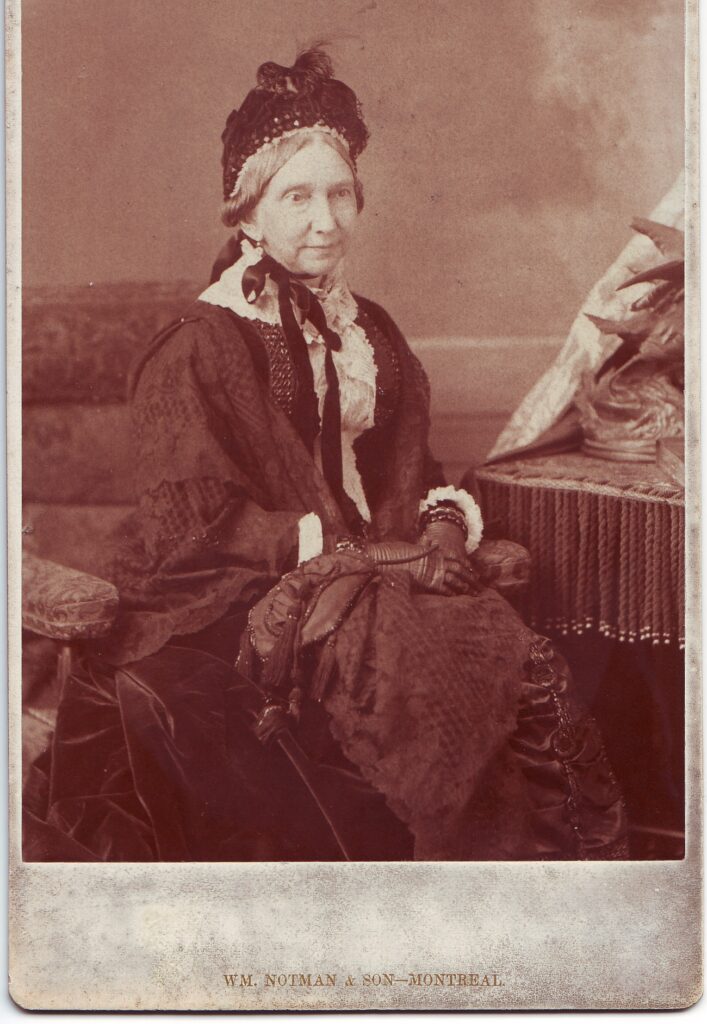As a well-known Montreal land-owner, writer and philanthropist, my great-great grandfather Stanley Clark Bagg (1820-1873) was profiled in the Dictionary of Canadian Biography (DCB). Unfortunately, several errors appeared in that article and, when researchers look to the DCB as a reliable source of information, these mistakes are perpetuated.

The DBC is correct in saying that SCB, as I like to call him, was the only son of Stanley Bagg, a Montreal merchant, and his wife, Mary Ann Clark. The entry adds that SCB was a notary, large landowner and president of the Numismatic and Antiquarian Society of Montreal and of the English Workingmen’s Benefit Society.
Then it states, “The Bagg family claimed to be of Norman descent. At the end of the 18th century Stanley Clark’s grandfather emigrated from England to America. At his death he left large estates in Durham County, England to his son Stanley.” This paragraph seems to refer to SCB’s grandfather Bagg. In fact, it was SCB’s maternal grandfather, John Clark, who emigrated from Durham, England. A butcher by trade, Clark owned property in Durham and he purchased a number of farm properties in Montreal that his grandson inherited.
Far from being wealthy, SCB’s paternal grandfather, Phineas Bagg, brought his family to Canada after he lost his farm in Pittsfield, Massachusetts to pay off his debts. On this side of the family, SCB’s immigrant ancestor was John Bagg, possibly from Plymouth, England, whose marriage in Springfield, Massachusetts was recorded in 1657.
The DCB was correct in saying that Stanley Clark Bagg married Catharine, eldest daughter of Robert Mitcheson and Frances MacGregor of Philadelphia in 1844, however, it went too far in adding that Frances was descended from the chiefs of the MacGregor clan and the old Scottish kings. This is a family story that may or may not be true. My research on Mary Frances MacGregor’s ancestry has come up against a brick wall.
The Dictionary says that SCB and Catharine “had one son, Robert Stanley.” True, Robert Stanley Clark Bagg was their only son, but they also had four daughters: Katharine Sophia, Amelia Josephine, Mary Heloise and Helen Frances.
The final inaccuracy in the DCB article was the statement that “his family was one of the oldest English families on Montreal Island .…” Both the Bagg and Clark families arrived in Montreal in the late 1790s, three decades after the British conquered New France and at least a decade after many English, Scottish and Loyalist families had made their way here.
These errors may be minor (although the descendants of SCB’s daughters might consider them quite important), but the online version of the DCB should be corrected quickly when issues are brought to their attention. The home page of the DCB invites readers to suggest corrections or additions, so I assume SCB’s biography will eventually be fixed. Meanwhile, in 2013, I wrote them and included extensive footnotes so they could verify my sources. Not long after that, without changing a word, they highlighted Stanley Clark Bagg as the Biography of the Day. (note: The article was finally revised in 2018.)
The takeaway from this article: even if you read about your ancestor in a source you consider reliable, check as many details as possible and be skeptical about sweeping or grandiose claims.
Photo: portrait by William Raphael; private collection.
Related articles:
This article is also posted on the collaborative blog https://genealogyensemble.com.
Janice Hamilton, “John Clark of Durham, England,” Writing Up the Ancestors, https://www.writinguptheancestors.ca/2014/05/john-clark-of-durham-england.html
Janice Hamilton, “An Economic Emigrant,” Writing Up the Ancestors, https://www.writinguptheancestors.ca/2013/10/an-economic-emigrant.html
Janice Hamilton, “The MacGregors: Family Legend or True Story?” Writing Up the Ancestors, https://www.writinguptheancestors.ca/2014/03/the-macgregors-family-legend-or-true.html
Notes:
The wording I have quoted here is from the online version of SCB’s biography:
Pierre Landry, “Bagg, Stanley Clark” in Dictionary of Canadian Biography, vol. 10, University of Toronto/Université Laval, 2003–, http://www.biographi.ca/en/bio/bagg_stanley_clark_10E.html, accessed November 29, 2015.
This is a rewrite of the original print version of SCB’s biography, published in Volume X of the DCB in 1972, which had even more errors.
I decided to blog about this after a friend showed me an article about Robert Stanley Bagg and Stanley Clark Bagg in a book edited by Col. William Wood, William Henry Atherton and Edwin P. Conklin, The Storied Province of Quebec, Past and Present, vol. IV, Toronto: Dominion Publishing Company Ltd., 1931, 435; http://www.ourroots.ca/page.aspx?id=3660140&qryID=7ac7b13a-a7be-4ef4-9eb9-ab5b20789894, accessed Nov. 29, 2015. That article not only invented a military career for SCB, it also erroneously stated that Stanley Bagg was born in England.
The most extensive biography of SCB was written shortly after his death and appeared in the journal to which he had been a regular contributor. The article is “In Memoriam, Stanley Clark Bagg, Esq, J.P., F.N.S.”, The Canadian Antiquarian and Numismatic Journal, vol. II, no. 2 (Montreal, Oct. 1873), p. 73, accessed through Google Books, Nov. 29, 2015.

